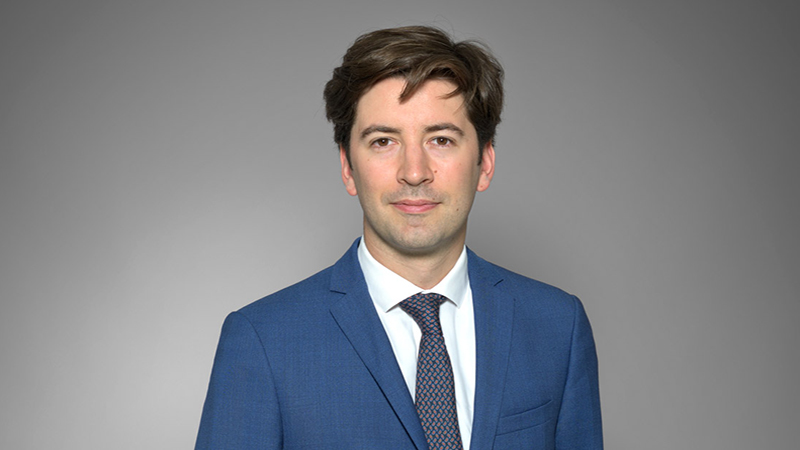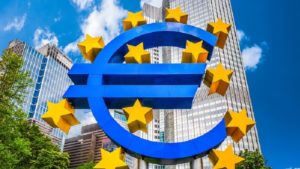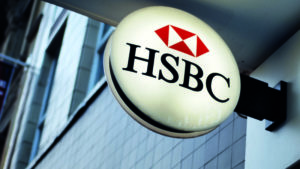Ignoring companies with large carbon footprints can lead to a lack of societal progress, portfolio concentration risk and the oversight of transitioning opportunities, according to Lombard Odier’s Guillaume Levannier (pictured).
The sustainable investment manager, who works on the firm’s £1bn TargetNetZero Strategy, told Portfolio Adviser the firm invests in a combination of ‘transitioners’ and ‘non-transitioners’ – or, what the team calls “ice cubes” and “burning logs”.
“The ice cubes in the portfolio might be polluting a lot today, but in the end, they are going to cool the whole portfolio like an ice cube, because the power of the decarbonisation of an ice cube is strong. We should strive to reduce our emissions as much as we possibly can, but simply having no oil and gas from tomorrow is impossible” he said.
“Saying that, this is not a reason to do nothing about it. In the coal sector, you will not find any ice cubes. In the oil and gas sector, you might find the occasional one. So for that reason, we tend to be overweight the utilities companies.
“Even so, you do not have 100% ice cubes in the utilities sector – there will always be companies that are involved in wind turbines, but also coal. It is a very difficult tango to take part in.”
See also: M&G hires sustainability head from Credit Suisse
Lombard Odier’s TargetNetZero (TNZ) Strategy was launched in 2021 and placed as an overlay across six sustainable equity and corporate bond funds, including TargetNetZero Global Equity (launched in 2017), TargetNetZero Europe Equity (launched in 2015) and TargetNetZero Euro IG Corporate (launched in 2001).
Now, the TNZ strategy has surpassed £1bn in assets under management and the firm’s Portfolio Temperature Alignment tool (LOPTA) has been recognised as a “leading temperature alignment tool” by the Financial Stability Board’s Task Force on Climate-Related Financial Disclosures (TCFD).
And yet, the portfolios will hold companies which would usually be excluded from sustainable strategies for their large carbon footprints.
Levannier calls these types of companies “transition opportunities”, and highlighted them as a key differentiator between themselves and their competitors.
“We cannot exclude burning logs and say ‘okay, we are going to put 100% of our portfolio in ice cubes’ – we have a very low tracking error [in our equity portfolios] of below 1%. So, there are a lot of overweight and underweight tilts to the portfolio,” he explained.
“There is an approach which focuses on past emissions only. They will say, ‘we don’t care about emissions in 2025, 2030, we will just take a snapshot now’, which mostly tends to be based on a five-year lag anyway because of the publication of the data.
“In our approach, we focus on yesterday and tomorrow. We do not underweight companies that pollute a lot today – it depends what they will limit tomorrow. Compared to other approaches, we would favour what we call the high-quality ‘high-today’ polluters, but what we call the transitioners.”
Taking Lombard Odier’s €51m TNZ Europe Equity fund as an example – its top ten holdings appear largely as investors would expect when it comes to an Article 8 European equity portfolio, especially given its low tracking error, with the likes of Novo Nordisk, semiconductor company ASML and AstraZeneca all listed on its factsheet. In between these, however, is a 1.8% holding in Shell, the seventh largest constituent in the portfolio (although a modest 20-basis point underweight to the benchmark’s MSCI Europe’s 2% weighting).
See also: FCA director of ESG defends ‘sustainable improver’ fund label
Levannier said Lombard Odier’s “granular approach” to portfolio construction – taking opportunities and tilts on a company-by-company basis without excluding sectors – means their portfolios can look quite different from those of their emissions-focused peers.
“The most exciting contrasts [between companies] can be found in the utility and energy sectors – we tend to group these together as one sector in many ways,” Levannier said.
“The energy sector is interesting because there are so many ways of extracting energy and then giving it back, and it is fascinating to then work with utility companies to understand these nuances – such as national differences, for example.”
The investment manager is also finding interesting stock-specific opportunities within the transport sector – specifically car manufacturers.
“Scope 3 emissions account for approximately 90% of all emissions in the car industry, and we always take these into account, as well as Scope 1 and 2.”
Scope 3 emissions – which are not produced by the company itself, but by other components of its value chain – can be shied away from by asset managers, because obtaining the data is complicated.
But Levannier pointed out that the Carbon Disclosure Project’s (CBP’s) Science-Based Targets Campaign is now reporting under Scope 3, which is “good news in terms of us being able to use the data”.
“What gave us a lot of traction was the ECB taking Scope 1, 2 and 3 into account in their corporate purchase programme last year. If the ECB is doing that on corporate bonds, that means it is getting a lot of momentum,” he said.
“Carbon risk is central to us and for the client via our fiduciary duty. We cannot just say that it does not exist.”
–
PA event: ESG Congress, 19th October | RSVP HERE
Hosted at The Gherkin
The ESG Congress is back to delve into the crucial topics of Environmental, Social, and Governance practices. Hosted at the iconic Gherkin, this event promises insightful discussions and a valuable platform for networking with industry peers. Reserve your spot now by RSVPing through the provided link and be part of the sustainable portfolio transformation.
Sponsors so far include Alliance Bernstein. Federated Hermes, Impax Asset Management, Jupiter Asset Management, Natixis, Skagen and Vontobel







